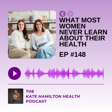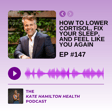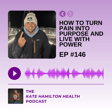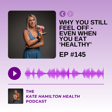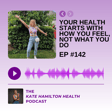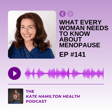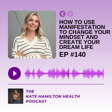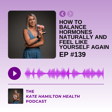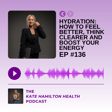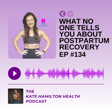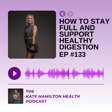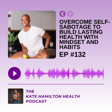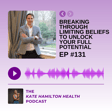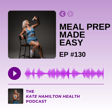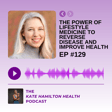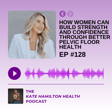
#138: Rachel Robertson: How to recover from injury and build strength that lasts
In this episode of the Kate Hamilton Health Podcast, I’m joined by kinesiologist and Pilates specialist Rachel Robertson for a deep, practical, and inspiring conversation on how to move better, feel stronger, and recover smarter.
With over 10 years of experience, Rachel breaks down the real differences between kinesiology and physiotherapy, the power of mindset in the recovery process, and the biggest movement mistakes people make - especially when it comes to squats, hinging, and posture. We also chat about her athletic background, her experience with kettlebell sport and figure skating, and how all of that shapes her approach to rehabilitation and performance.
Whether you're healing from an injury, navigating postpartum changes, or simply trying to move through life with more strength and confidence, this episode is full of practical takeaways.
EPISODE HIGHLIGHTS:
[0:56] What kinesiology is and how it differs from physiotherapy
[4:29] Rachel’s journey from athlete to movement specialist
[9:52] The role of mindset and education in injury recovery
[24:32] Why Pilates is so effective for rehab and strength building
[27:43] The most common movement patterns people struggle with
[32:39] How posture, breath, and motor control affect strength
[37:41] Real talk on postpartum recovery and realistic fitness for moms
[46:39] Simple ways to integrate movement into your busy life
Links & Resources:
- Connect with me on Instagram here
- Connect with Rachel on Instagram here
- Learn more about KHH coaching here
If you enjoyed this episode, please subscribe, leave a review, and share it with friends who might benefit. For more health and fitness tips, follow me on Instagram and TikTok @katehamiltonhealth.
Music b LiQWYD Free download: hypeddit.com/link/xxtopb [http://hypeddit.com/link/xxtopb] Promoted by FreeMusicPromo [https://www.youtube.com/channel/UCbycji-eySnM3WD8mbxPUSQ] / @freemusicpromo
